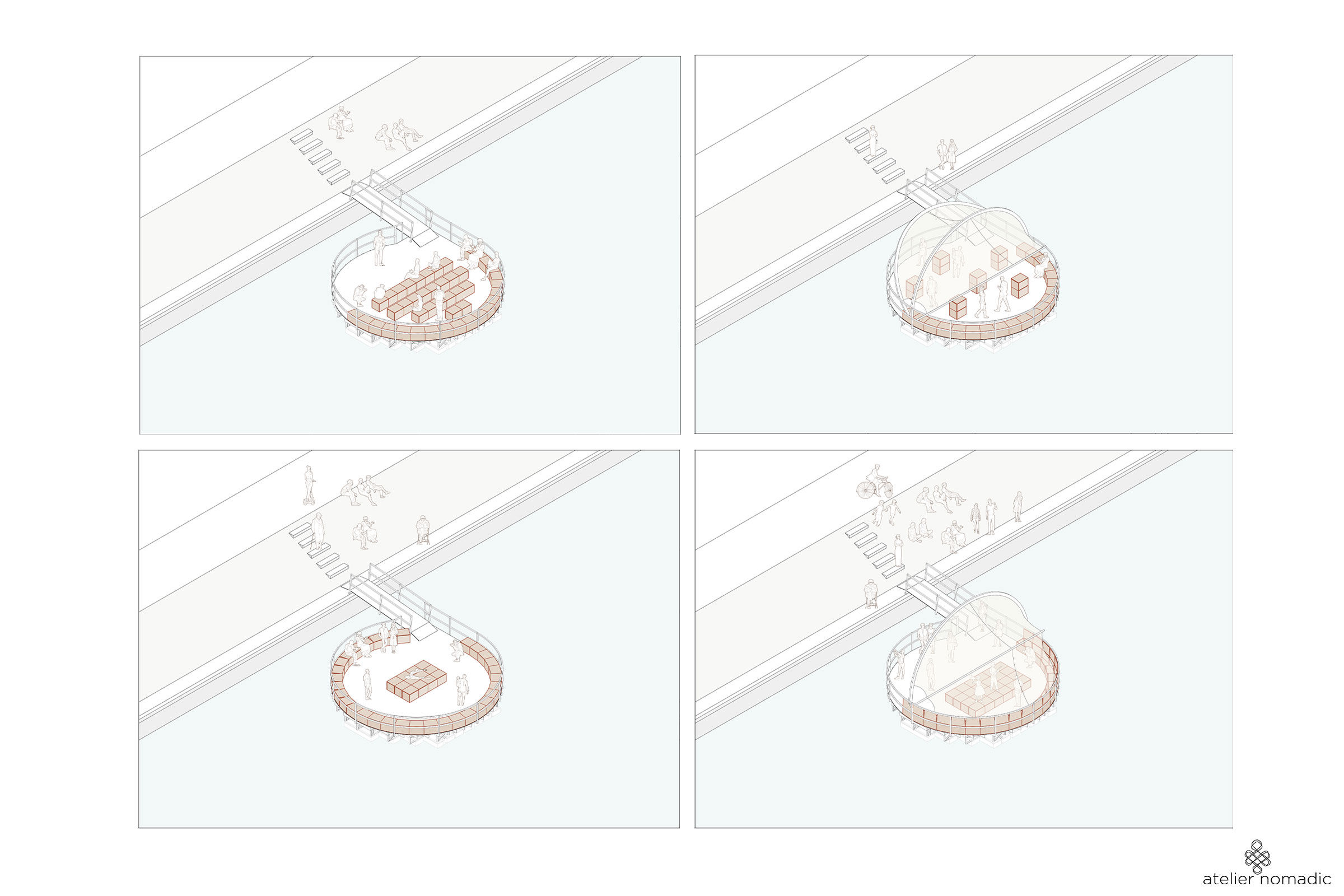Maribor River Pavilion, Slovenia: A Synthesis of Sustainability and Cultural Heritage
Introduction to Maribor River Pavilion
The Maribor River Pavilion in Slovenia, designed by the innovative Nomadic Resorts, stands as a remarkable example of how modern architecture can harmonize with historical cultural themes. Located along the scenic Drava River, this floating structure is designed to be a dynamic center for cultural activities, reflecting the area’s rich history of river rafting.
Sustainable Design and Innovation
Nomadic Resorts, known for their commitment to sustainable resort architecture, incorporated eco-friendly materials and technologies into the pavilion’s design. The structure features a retractable roof and walls composed of sustainable materials such as bamboo, which not only minimize its environmental footprint but also blend seamlessly with the natural surroundings.
Architectural Flexibility and Functionality
The pavilion is distinguished by its architectural flexibility, designed to host a variety of events from concerts and exhibitions to community gatherings and educational workshops. This adaptability ensures that the pavilion can meet changing community needs and preferences, making it a valuable asset for the city of Maribor.
Cultural Integration and Impact
Drawing inspiration from the historical significance of river rafting in Maribor, the design of the pavilion pays homage to this tradition through its flowing, dynamic shape and its location on the water. This design choice deepens the cultural resonance of the pavilion, making it a symbol of Maribor’s heritage and a focal point for cultural revitalization.
Environmental and Community Benefits
The Maribor River Pavilion not only serves as a cultural venue but also promotes environmental and social sustainability. Its location encourages visitors to engage with the river environment, fostering a sense of community and environmental stewardship. Additionally, the pavilion’s design and operations focus on energy efficiency and reducing ecological impact, aligning with broader goals of sustainability.
Conclusion: A New Paradigm in Resort and Cultural Architecture
The Maribor River Pavilion represents a forward-thinking approach to resort and cultural architecture, where design innovation meets environmental ethics and community engagement. It sets a new standard for how architectural projects can integrate into and enhance their natural and cultural environments, providing a blueprint for future developments in the industry.
Maribor river pavilion, Slovenia
The river pavilion will activate the banks of the Drava River in the city of Maribor. It will host cultural events such as music performances, lectures, wine tasting events or dance acts as a place for contemplation and relaxation by the river.
Its floating presence revives the tradition of rafting that the area has been known for over the past centuries but that came to an end by the construction of the railway in the 19th century that made transportation over water redundant.
The circular appearance of the Pavilion is reminiscent of a music note and allows for a flexibility in use by the different configuration of the furniture elements. The retractable arched roof canopy creates a visual link to the adjacent Old Bridge from 1913.
The roof can be folded down and stowed inside the semi-circular bench for open-air events or during transportation to other locations along the river, allowing for a safe passage under the bridges. The boarding ramp (or bridge) can be rolled onto the main platform during transportation.
Furniture elements have been integrated into the design to accommodate a maximum flexibility of use. These include wooden boxes that can either form a long bench along the perimeter, be combined to create a central stage, be configured into rows of seating or to be stacked into tables.




